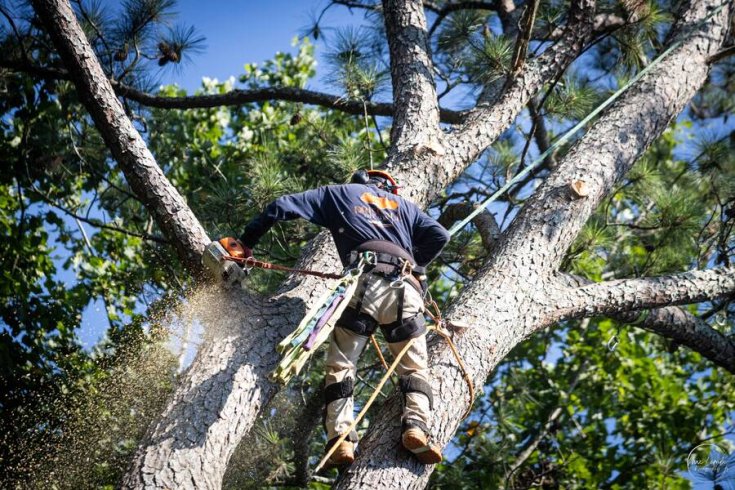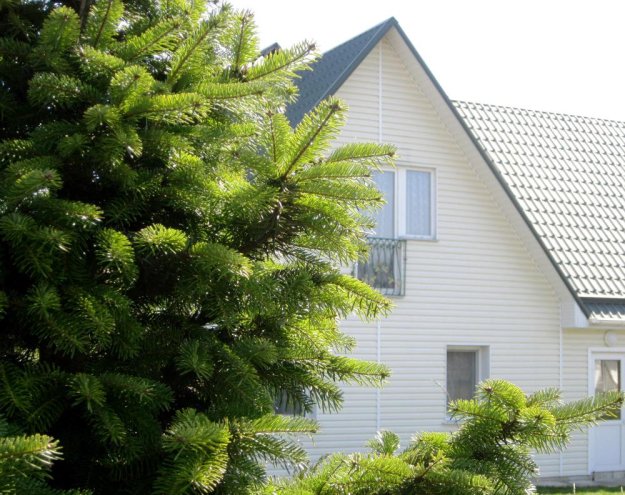Menu
Trees grow over 30 feet tall, with canopies that expand over half their height. However, trees start as tiny seeds and require routine care to enhance growth. If you have a tree planting project lined up, it is advisable to understand the different stages of development. At Driscoll Tree Service, we have professional arborists with extensive experience in tree planting and maintenance, giving you peace of mind throughout the project. If you prefer a more hands-off approach to landscaping, hire a tree care company to handle the heavy lifting. Here are the growth stages of a tree.

As mentioned, every tree starts as a tiny seed that needs a safe place to sprout. Germination is when the primary roots break through the seed, anchoring the seed and providing water for development. Once this happens, the shoot grows upwards and has a leaf. The seed can grow above the shoot leaf, pulling the tip through the soil, or below the shoot leaf, pushing the entire shoot through the soil.
Once the shoot grows above the ground, it becomes a seedling. Many trees are susceptible to infections and infestations during this stage, hence the need to schedule routine inspections with a tree service provider. We leverage unmatched industry knowledge to inspect, diagnose, and address problems before things worsen. We recommend investing in regular care until the seedlings reach three feet tall.
What is the difference between a sapling and a mature tree? Well, saplings have flexible trunks and thinner or smoother bark. Once your seedlings exceed three feet, they become saplings. However, different species vary in their duration during this developmental stage. Trees with long lifespans, such s oaks, can remain in the sapling stage longer than short-lived species.
If your trees produce flowers and fruits, they enter the next stage: maturity. Based on the species, healthy trees can live up to 300 years before reaching the next stage. A popular tree species in many homes is the English oak, which produces acorns in the 40th year after planting. Besides the tree’s longevity, regular inspections and maintenance by a tree care company go a long way in maximizing health.

Ancient trees can’t be labeled by age because many generations have come and gone. So, how do you identify characteristics of a tree beyond maturity? There are two giveaways to help you identify an ancient tree: a wide trunk and a small canopy. A tree can also be ancient if it is a few hundred years, like Rowan, or when it’s several millennia old.
This is the final growth stage, also known as a snag. It comprises dead or dying trees that pose a safety hazard to the environment. In addition, dead wood attracts insects, pests, and other vermin to your home. Call a tree service for professional removal if you suspect a dead or dying tree in your backyard.
Contact us at Driscoll Tree Service and schedule an appointment with our experts. We understand the importance of trees in your home and offer exceptional care to ensure you maximize your investment.

Myths About Tree Care Maintaining healthy trees requires proper care practices. Whether you prefer a hands-on approach or hiring tree service providers, regular care is essential for the trees’ overall well-being. However, most people rely on the internet for information,…
Read More
Benefits of Tree Trimming Do you have a tree that needs a lot of attention, but you're unsure what to do? Whether your tree is growing too close to the house, hangs over the driveway, or is growing unevenly, the…
Read More
The Best Time of Year to Trim Your Trees (And Why It Matters) Trees are more than just scenery that beautify Metro Atlanta's landscape; they’re vital parts of our yards and provide shade, beauty, and environmental benefits. If you want…
Read More
What Is Tree Fungus? Trees are an integral part of our environment, adding value, beauty, and a sense of tranquility to our properties. However, these majestic organisms are not immune to various challenges, one of the most common being tree…
Read More
Are Exposed Tree Roots Bad? Exposed tree roots might look like an enchanting natural feature, but those gnarled “wooden serpents” at your feet are more than just a quirky accent of your tree. In fact, roots surfacing above the soil…
Read More
Trees are some of the most beautiful and beneficial parts of any outdoor space. It’s hard not to appreciate their tall branches, fluttering leaves, and calming presence. They offer us oxygen, shade, privacy, and - in some lucky cases -…
Read More
Caring for Your Tree’s Roots Planting a tree is a long-term investment, as most trees take several years to grow to their potential. While there are many ways to maintain maximum health, such as tree pruning and trimming, managing its…
Read More
4 Ways to Fill the Empty Space Where a Tree Was When a tree is removed from your yard, it can leave a space that can be challenging to fill. Fortunately, various creative and functional ways exist to fill that…
Read More
Trees and Your Home: Tips for Extending the Lifespan of Your Roof A well-maintained roof is crucial for any home, as it protects against the weather and maintains structural integrity. While trees can enhance property beauty and value, if they…
Read More
The Best Way to Remove a Tree Stump When a tree is cut down for whatever reason, the stump left behind is not just an eyesore but also a safety hazard on your premises. Waiting for the stump to decompose…
Read More